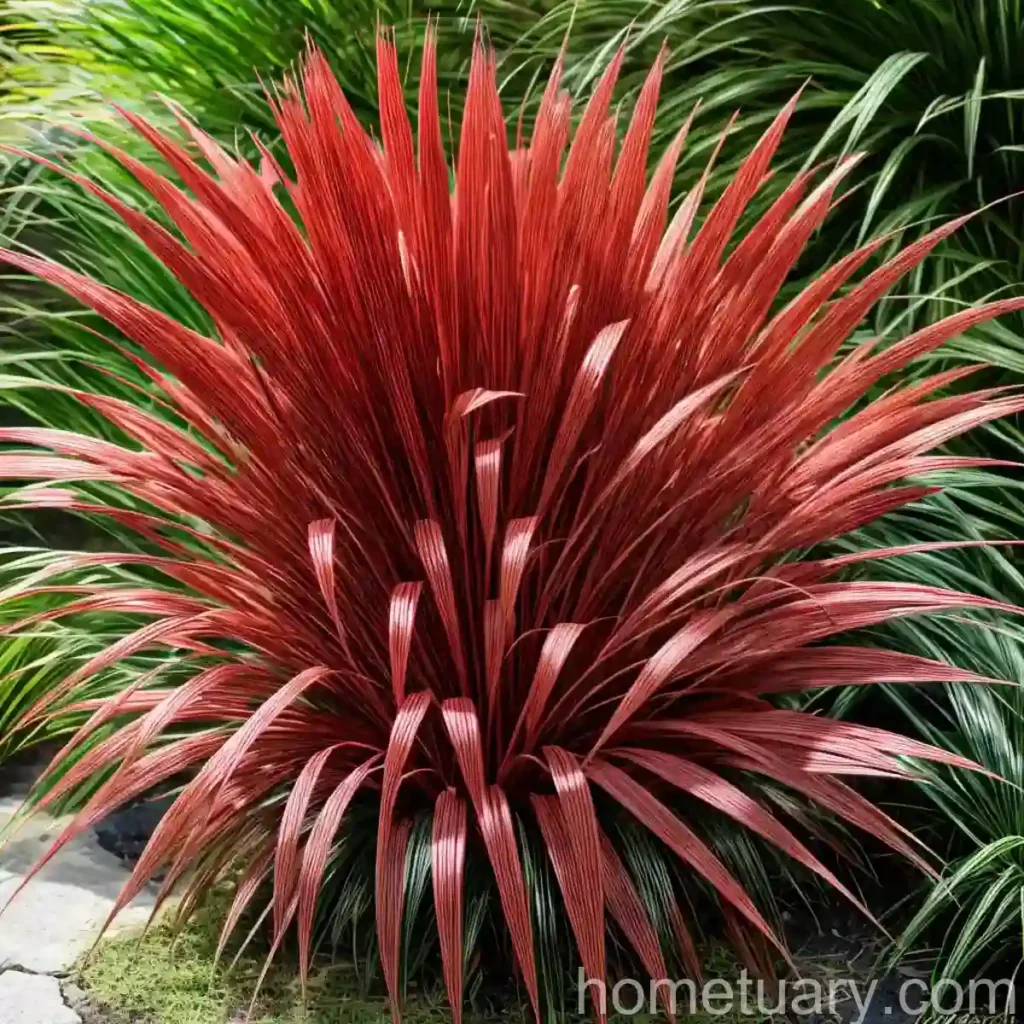Japanese Blood Grass (Imperata cylindrica ‘Rubra’)
What is Japanese Blood Grass?
Japanese blood grass, scientifically known as Imperata cylindrica ‘Rubra’, is a striking ornamental grass that hails from East Asia. It is known for its distinctive red foliage, which intensifies in color as the season progresses. This particular cultivar, also known as Red Baron grass, has gained popularity in gardens and landscapes for its unique aesthetic appeal.
Key Takeaways
Japanese Blood Grass (Imperata cylindrica ‘Rubra’)
- Cultivar Name: Imperata cylindrica ‘Rubra’
- Common Names: Japanese ornamental grass, Red Japanese blood grass, Crimson blood grass, Japanese red sword grass, Red feather grass Japan, Red baron grass, Red blade ornamental grass, among others
- Care Keywords: Japanese blood grass planting, landscaping, water requirements, maintenance, gardening, container gardening, propagation, growth, and hardiness
- Characteristics: Distinctive red foliage, low maintenance, suitable for containers and borders
Culture
Japanese blood grass, a warm-season perennial, is renowned for its eye-catching appearance that adds a pop of color to gardens and landscapes. Its cultural requirements are essential to ensure optimal growth and vibrancy.
Uses
Japanese blood grass is commonly used for ornamental purposes, adding visual interest to various settings. It can be utilized in different landscape designs, including borders, containers, and as ground cover. The striking red coloration of its blades makes it a standout feature in any garden.
Water
Maintaining the right moisture levels is crucial for the health of Japanese blood grass. It thrives in moderately moist soil but is relatively drought-tolerant once established. However, it is essential to ensure consistent watering, particularly during periods of extended dryness.
Sunlight
Japanese blood grass flourishes in full sun to partial shade. It is essential to provide it with adequate sunlight to support its vibrant red coloration.
Fertilizer
When it comes to fertilization, Japanese blood grass benefits from a balanced, slow-release fertilizer in the spring. Applying a layer of compost around the plants can also provide the necessary nutrients for healthy growth.
Soil
This ornamental grass prefers well-drained soil with a slightly acidic to neutral pH. Amending the soil with organic matter can enhance its overall quality and fertility, promoting the thriving growth of the grass.
Pruning
Pruning is generally not required for Japanese blood grass, making it a low-maintenance addition to any garden. However, removing any dead or damaged foliage can help maintain its aesthetic appeal.
Propagation
Japanese blood grass can be propagated through division or by collecting and planting its seeds. Division should be carried out in the early spring, and the newly established clumps can be replanted in desired locations to expand the ornamental display.
Container Popularity
Due to its compact size and striking appearance, Japanese blood grass is a popular choice for container gardening. It adds a dramatic element to potted arrangements and can be showcased on patios, balconies, and other outdoor spaces.
Container Common Diseases
When grown in containers, Japanese blood grass can be susceptible to certain diseases, including fungal infections such as leaf spot and rust. It is essential to maintain proper air circulation and avoid overwatering to prevent these issues.
Disease Diagnosis
Diagnosing diseases in Japanese blood grass involves carefully inspecting the foliage for any signs of discoloration, lesions, or abnormal growth patterns. Prompt action, such as adjusting watering practices or applying appropriate fungicides, can help manage and prevent the spread of diseases.
Common Pests
While Japanese blood grass is relatively resistant to pests, it may sometimes attract unwanted visitors such as aphids, slugs, or snails. Regular monitoring and the implementation of pest control measures, when necessary, can help protect the grass from potential damage.
Botanist’s Tips
- Accent Plant: Japanese blood grass serves as an excellent accent plant in mixed borders and rock gardens, adding a dash of vibrant color and texture.
- Seasonal Variation: The red coloration of the grass intensifies during the growing season, reaching its peak in late summer and early fall, creating a visually striking display.
- Companion Planting: Pairing Japanese blood grass with contrasting foliage plants can create dynamic and visually appealing combinations in the garden.
Fun Facts
- The red coloration of Japanese blood grass is attributed to the presence of pigments called anthocyanins, which are responsible for its distinct visual appeal.
- In its native habitats, Japanese blood grass can grow in a variety of environments, from moist lowlands to drier upland areas, showcasing its adaptability.
Links to External Resources
- Imperata cylindrica ‘Rubra’ – Missouri Botanical Garden
- Japanese Blood Grass – The Spruce
- Growing Japanese Blood Grass – HGTV
By keeping these cultural insights in mind, plant enthusiasts can effectively cultivate and showcase the stunning beauty of Japanese blood grass in their own gardens and landscapes. Whether as an ornamental accent or a focal point, this striking cultivar has much to offer in terms of visual appeal and low-maintenance care.















